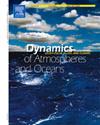菲律宾WRF热带气旋模拟对不同海温资料的敏感性
IF 2
4区 地球科学
Q2 GEOCHEMISTRY & GEOPHYSICS
引用次数: 0
摘要
提高数值天气预报(NWP)模式(如天气研究与预报(WRF)模式)中热带气旋(TC)模拟的准确性已成为一项日益重要的工作。海气水汽和能量通量主要受海温及其下混合层驱动,对TCs的形成和增强有重要影响。研究了菲律宾台风“山竹”、“戈尼”和“雷”对不同海温数据集和WRF一维海洋混合层(OML)模式的敏感性。我们发现,使用高分辨率海温数据更新的WRF运行显示出模拟最大风速的改进,从而改善了菲律宾群岛和/或沿海水域的模拟路径,因为它在台风登陆该国后对(基于强度的)跟踪算法提供了更好的信心。与tc相关的降雨也被发现对海温更新的模型运行很敏感。结果表明,海温的使用显著降低了wrf模拟的TC降雨的干偏。使用高分辨率GHRSST数据集,通过更好地模拟菲律宾内陆群岛水域沿海陆地和海洋的感热通量和潜热通量或水分通量,获得了比其他海温数据更好的TC模拟结果。台风引起的灾害通常是由陆地上的强风和暴雨引起的。考虑到在WRF模型中加入海表温度更新几乎不会增加计算成本,因此在TC建模中使用海表温度是改进TC危害模拟的有效方法。本文章由计算机程序翻译,如有差异,请以英文原文为准。
Sensitivity of WRF tropical cyclone simulations in the Philippines to different SST data
Improving the accuracy of tropical cyclone (TC) simulations in numerical weather prediction (NWP) models, such as the Weather Research and Forecasting (WRF) model, has been an increasingly important endeavor. Sea-air moisture and energy fluxes are mainly driven by sea surface temperature (SST) and the mixed layer underneath, which have significant effects on the formation and intensification of TCs. We investigated the sensitivity of three Philippine TCs - Typhoons Mangkhut, Goni, and Rai - to different SST datasets and a 1-D ocean mixed layer (OML) model in WRF. We found that the WRF runs with the high-resolution SST data update showed improvements in modeled maximum wind speed and consequently improved the simulated tracks over the archipelagic and/or coastal waters of the Philippines, as it gave better confidence in the (intensity-based) tracking algorithm after TCs made landfall in the country. TC-associated rainfall was also found to be sensitive to SST-updated model runs. Our results show that the use of SST significantly reduces the dry bias of WRF-simulated TC rainfall. The use of the high-resolution GHRSST dataset yielded the best TC simulation results over other SST data by simulating the sensible and latent heat or moisture fluxes over land and sea along coastlines better across the inland archipelagic waters of the Philippines. Disasters due to TCs are often brought about by strong winds and heavy rains over land. Considering that virtually no added computational cost is incurred in including SST update in the WRF model, the use of SST in TC modeling is an efficient method to improve TC hazard simulations.
求助全文
通过发布文献求助,成功后即可免费获取论文全文。
去求助
来源期刊

Dynamics of Atmospheres and Oceans
地学-地球化学与地球物理
CiteScore
3.10
自引率
5.90%
发文量
43
审稿时长
>12 weeks
期刊介绍:
Dynamics of Atmospheres and Oceans is an international journal for research related to the dynamical and physical processes governing atmospheres, oceans and climate.
Authors are invited to submit articles, short contributions or scholarly reviews in the following areas:
•Dynamic meteorology
•Physical oceanography
•Geophysical fluid dynamics
•Climate variability and climate change
•Atmosphere-ocean-biosphere-cryosphere interactions
•Prediction and predictability
•Scale interactions
Papers of theoretical, computational, experimental and observational investigations are invited, particularly those that explore the fundamental nature - or bring together the interdisciplinary and multidisciplinary aspects - of dynamical and physical processes at all scales. Papers that explore air-sea interactions and the coupling between atmospheres, oceans, and other components of the climate system are particularly welcome.
 求助内容:
求助内容: 应助结果提醒方式:
应助结果提醒方式:


